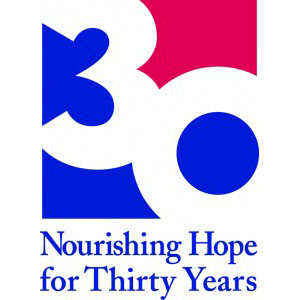
The study revealed that an estimated 24 percent of clients in the Food Bank’s service area of 25 counties and nine cities have a post-high school education, such as license or certification, some college or a four-year degree.
“Despite attaining education beyond high school, economic conditions are forcing many who were once food secure to seek charitable food assistance,” said Michael McKee, Food Bank CEO. “However, the study revealed something even more worrisome to me; 76 percent of our clients have a high school degree or less, and they’re often working hard in low-wage jobs.”
An estimated 60 percent of households have a member who had worked for pay in the last 12 months; in 56 percent of client households the most-employed person from the past 12 months is currently out of work.
Those with a high school education or less have experienced real wage loss of 1.5 percent since 2000, compared to a 1.5 percent gain for those with a bachelor’s degree and a six percent gain for those with advanced degrees, McKee said.
“The widening gap in income growth is a troubling trend, and we know that as long as earnings decline, the need for charitable food assistance will remain high,” he added.
Other key findings in the study include:
- Number of people served by the Food Bank: In the Food Bank’s service area, 164,700 unduplicated individuals and an estimated 55,500 unduplicated households are served annually.
- Client demographics: Within the Food Bank’s service area, 60 percent of clients identify themselves as white, 25 percent as black or African American and 10 percent as Hispanic or Latino. Among all clients, 29 percent are children under age 18, and 11 percent are seniors age 60 and older.
- Income and poverty: An estimated 11 percent of client households have no income, 30 percent have annual incomes of $1 to $10,000, and 35 percent have annual incomes of $10,001 to $20,000. Taking into consideration household size, 55 percent of client households have incomes that fall at or below the federal poverty line.
“People are turning to our network as a bridge to get them through a period of unemployment or underemployment,” McKee said. “That bridge has grown longer as fulltime work for individuals at the bottom of the labor market remains scarce and wages continue to be stagnant.”
Job growth is still heavily concentrated in lower-wage industries, constituting 44 percent of recovery jobs, a pattern that has persisted for more than four years.
About Hunger in America 2014
Hunger in America 2014 is a series of quadrennial hunger studies, and the largest and most comprehensive of its kind. Commissioned by Feeding America, the nation’s largest domestic hunger relief organization, the study was conducted and produced by the research vendor Westat, along with The Urban Institute. The Blue Ridge Area Food Bank is one of 200 Feeding America member food banks that participated in the study. Hunger in America 2014 covers data collected between October 2012 and August 2013.
View the full Hunger in America 2014 report for the Blue Ridge Area Food Bank here. View the national study at www.feedingamerica.org/hunger-in-america.
About the Blue Ridge Area Food Bank
Founded in 1981, the Blue Ridge Area Food Bank is the largest organization alleviating hunger in western and central Virginia. Headquartered in Verona, VA, the Food Bank serves 25 counties and nine cities through distribution centers in Charlottesville, Lynchburg, Winchester and Verona. The Blue Ridge Area Food Bank distributes more than 24 million pounds of food annually to 114,000 people each month through a network of 224 community partners — food pantries, soup kitchens, shelters, schools, churches and other non-profit groups. The Food Bank is a member of Feeding America, a national food bank association that supports more than 200 food banks across the United States. For more information, visitwww.brafb.org.










